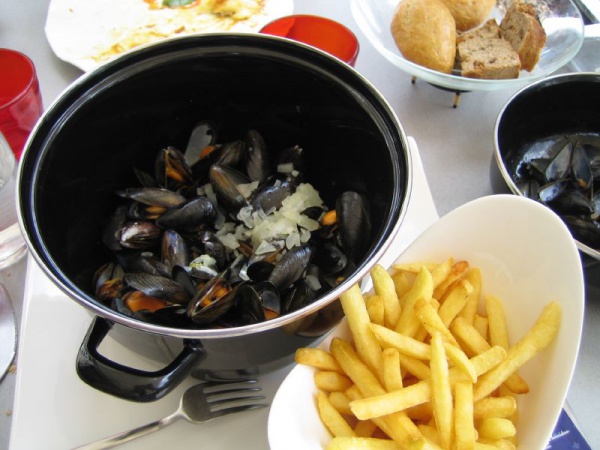Facts About Moules-frites
Moules-frites, or moules et frites, is a cherished dish from Belgium that pairs mussels with fries. This delectable combination is regarded as Belgium's national dish and also enjoys great popularity in France. The origins of moules-frites can be traced to the Flemish coast, where mussels were a staple, coupled with Belgium's fondness for fried potatoes, especially during the winter months when other food options were scarce.
Each year, Belgium consumes between 25 and 30 tonnes of mussels in the form of moules-frites. Many of these mussels are sourced from mussel farms in Zeeland, Netherlands. Numerous mouthwatering variations of moules-frites exist, each differing in how the mussels are prepared. Popular versions include Moules Marinière, Moules Nature, Moules à la Crème, Moules Parquées, Moules à la Bière, and Moules à l'Ail. The fries, known as frites, are typically made from Bintje potatoes, prized for their high starch content. To achieve the perfect crispy exterior and tender interior, the potatoes are double-fried.
When served, moules-frites usually features the mussels and fries in separate dishes to prevent the fries from becoming soggy. The mussels are often brought to the table in the same pan they were cooked in, accompanied by an extra dish for the empty shells. Additionally, there are inventive variations of the dish that might include non-traditional ingredients to enhance the stock. A common accompaniment is "Mosselsaus" a zesty sauce made from mayonnaise, mustard, and vinegar.
Whether you're in Belgium, France, or elsewhere, moules-frites offers a delightful taste of Belgian culinary heritage.

 Germany
Germany